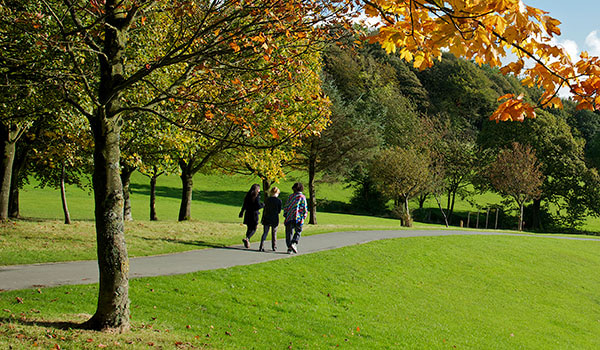Within our flexible Part I system, this 40-credit module runs over the course of the year and introduces students to the field of English Language. It is organised into eight units that cover:
Visual English and English Vocabulary
This unit covers the development of English spelling, including changes in letters and punctuation. We also look at the origins and development of English vocabulary and the complexities involved in defining fundamental units, such as words.
English Sounds and Structures
This unit explores the building blocks of speech, the workings of the human vocal tract, and how we can analyse and transcribe speech. It then builds upon this to examine how smaller units are combined into grammatical structures, while teaching a framework for the analysis of sentence structure.
Media English
This unit considers how media genres have developed, such as how language is used on TV, in newspapers and online. It also explores how language is used across a range of media, including political speeches, advertising, and campaigning, and how social media may be influencing language in real-time.
English Dialects
In this unit, you’ll explore the richness of English dialects, understanding where they came from and how they might change in the future. In doing so, we’ll also examine how English spread around the world and whether there’s such a thing as ‘standard English’.
Analysing English in Use
This unit will teach you fundamental skills in discourse analysis, allowing you to develop a set of tools for analysing texts and their contexts. This includes analysing how language is used to frame political topics, techniques for persuasion, and language and power.
Creative English
What is the difference between ‘ordinary’ and ‘literary’ language? In this unit, you will explore creative uses of English, spanning literature, poetry and metaphors. We will also think about creativity in everyday language, showing how seemingly ordinary speech and writing contains boundless novelty and verbal artistry.
Changing English
One of the most fundamental characteristics of language is that it changes over time. But why does language change? In this unit, you’ll explore the origins of English, how it has changed over time, and how we can use databases of historical language to track changes in writing.
Teaching English
English is the most widely spoken language in the world, but the majority of speakers learn it as a second language. In this unit, you’ll explore issues and opportunities in the teaching of English as a second language, including classroom interaction and the current best practices on how to teach a language.
Within our flexible Part I system, this 40-credit module runs over the course of the year and introduces students to the field of Linguistics. It is organised into six units that cover:
Structures of Language
This unit focusses on the core areas of linguistic description: phonetics, phonology, morphology, syntax, semantics and pragmatics. The unit introduces students to the structure and meanings of words and sentences as well as the way words and sentences are understood in specific contexts of use.
Language Beginnings and Endings
This unit explores the evolution of language in our species, the way children acquire language and the way second languages are learned as children and adults. It also considers how language can be impaired and how and why languages die out.
Language and Society
This unit considers how languages differ according to social variables like class, gender and region. It also considers the relationship between language and politics and language and culture. The implications of multilingualism and issues of language policy and planning are also addressed.
Language Variation and Change
This unit explores different modalities of language including writing systems and sign language. It also explores the relationships between different languages and the way languages can change over time. Diversity in the world’s languages and the effect language may have on the way people think are also addressed.
Applied Linguistics
In this unit, students are introduced to some of the areas where knowledge and methods from linguistics are applied. You’ll explore the contributions that linguistics has made to areas like forensic science, computer science, health communication, education and literacy.
Methods of Linguistics
In this unit you’ll be introduced to some of the research methods relied on in linguistics, including both qualitative and quantitative methods. You’ll explore the different ways that data is collected and analysed in linguistics through ethnography, corpus linguistics, surveys and experiments.





